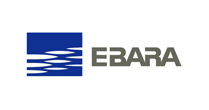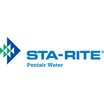
June 24th, 2025
In New York City, fire safety is an issue of great importance. The city’s dense skyline and busy buildings require fire protection systems that are not only effective but also in full compliance with very strict local codes. At the core of these fire protection systems is the New York City fire pumps, which increases water pressure for sprinklers and standpipes at the time of a fire breakout. Are you planning to install a fire pump in New York? Then, you will need to deal with a maze of regulations to keep your people safe and protect your buildings.
Here’s your compliance guide to NYC fire pumps.
New York City has many national (and local) standards in place. For example, New York City fire pumps must be UL-listed and must have passed safety and performance tests from Underwriters Laboratories (UL). This certification is your guarantee that the pump will perform as required in a fire emergency.
Below are some additional things you need to take care of when planning your New York City fire pump:
The fire pump station is key to smooth operations during fire emergencies. In New York City, it is required to place your fire pump on the floor level of the entrance. Be sure to put it in rooms made of noncombustible materials that have a fire-resistance rating of at least 2 hours. Additionally, the rooms must be well-insulated and properly drained to protect the pump from damage, ensuring reliable operation 24/7.
Here, access is also an essential factor to consider. The pump room should have a direct exit to the street or a protected walkway for quick access by fire trucks. No other machinery or mechanical equipment should be allowed in the fire pump room unless the building meets specific high construction standards. This keeps the pump isolated from potential hazards or interference.
In New York City, most fire pumps usually operate on electric motors. However, we also see an excellent use for diesel-powered fire pumps, which are commonly used as power backup systems. The power should come in from the street side of the building’s service switch. It must have a large, clearly marked disconnect switch labeled “Fire Pump Power Supply,” which allows firefighters or maintenance crews to isolate the power when needed quickly.
Diesel pumps should meet UL standards and must be maintained to start up automatically in the event of a power failure. Additionally, electric and diesel-powered New York City fire pumps must undergo regular testing to ensure that they provide the required water flow during emergencies.
In the past, we have paid little attention to an essential element of NYC fire pump compliance, i.e., weekly inspections and testing regimes. The NYC Fire Code has adopted NFPA 25 standards, requiring fire pumps in residential and commercial buildings to be visually inspected weekly.
These regulations suggest that the New York City fire pumps are free from damage. Additionally, they recommend that pump tests be conducted by certified contractors who possess the necessary credentials.
Picture your fire pump sitting unused for long periods. What if it has to jump back into action during fire emergencies suddenly? And what if it doesn’t meet your expectations? Preventative care is key here. This includes a complete oil change at least once a year (and every 6 months if the fire pump is used very often).
Also, clean out the filters, check on the anodes, and replace them to prevent corrosion. Move all valves monthly to prevent them from getting stuck. Intake filters should be cleaned out at regular intervals to prevent debris from clogging the pump. Neglecting these routine maintenance tasks may cause pump failure at a critical time.
Avoiding fines, legal complications, or even shutdowns means staying vigilant against common violations. Penalties can range from $500 to $10,000 depending on severity and recurrence. Some common violations include:
So, don’t wait for smoke! Staying compliant isn’t just about avoiding fines. It’s about lives, property, and the peace of mind that comes from knowing your system will work when it matters most. So, take the time. Do the tests. File the paperwork. And if you’re unsure, hire an expert.
For more information on New York City fire pumps, please contact us today!
john@callaghanpump.com,
eileen@callaghanpump.com,
dan@callaghanpump.com,
sales@callaghanpump.com,
service@callaghanpump.com












